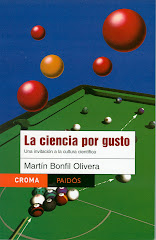Published in Milenio Diario, July 15th, 2009
 Science does not reveal absolute truths, but it does have a commitment to reality.
Science does not reveal absolute truths, but it does have a commitment to reality.
Mexicans remember how, after the emergency stage that forced
There were multiple versions of the rumour, but all of them had something in common: it was a way of denying reality. The traumatic experience of those secluded and inactive days, and the economic, but also social and psychological harm they left, created a fertile field for rumours that everything was a complot.
The efficacy of the health authorities was questioned, as well as the science behind their decisions. Today we can see that the epidemic, already spread around the world, is a reality that affects many other countries.
In the meantime, research about the virus advances: a group lead by Yoshihiro Kawaoka, from Wisconsin University, reported last Monday on Nature magazine that the swine virus -which is actually a result from mutations and combinations from other already existing viruses, human, bird and swine- causes more harm to the lungs of experimental animals (mice, ferrets and macaques) than the common seasonal influenza virus, and that it can asymptomatically infect pigs (maybe that's why the epidemic was not detected until it jumped into humans).
They also found that people born before 1920 and therefore exposed to the massive epidemic of A/H1N1 influenza in 1918 (spanish flu) have antibodies that can react against the current virus, unlike people born after (thus maybe explaining the anomalous behavior of the epidemic, which affected mainly younger people).
Currently, the virus is still sensitive to tamiflu, but it is very likely that in the short term some resistant varieties will arise. Soon, we will have a vaccine, but it will take time to produce it in enough quantities to respond to the World Health Organization's request for "all countries to have access to the vaccine."
The reality of the pandemic imposes itself, beyond any belief or rumour. The countries should better pay attention to what science reveals, and they should act united in consequence.
(translated by Adrián Robles Benavides)
To receive Science for pleasure weekly
in your email, subscribe here!





No comments:
Post a Comment